-
 Ranking the NFL's top 25 prospects: Young players who could break out in 2020 🏈
Ranking the NFL's top 25 prospects: Young players who could break out in 2020 🏈
Ranking the NFL's top 25 prospects: Young players who could break out in 2020
ESPN PLUS ($ MATERIAL)
Every year, Football Outsiders puts together a list of the NFL's best and brightest young players who have barely played. The overwhelming majority of draft-day discussion is about first-round picks, with a bit of discussion about guys who weren't first-rounders but should have been, particularly if they were quarterbacks.
This list is about the others.
Everybody knows Chase Young and Joe Burrow are good. There's a cottage industry around the idea of hyping every draft's No. 1 quarterback as a potential superstar. But players don't stop being promising just because they don't make waves in their rookie seasons. This is a list of players who have a strong chance to make an impact in the NFL despite their lack of draft stock and the fact that they weren't immediate NFL starters. (Our full criteria for who's eligible for this list is at the bottom of this article.)
Previous editions of the list have hyped players such as Geno Atkins, Grady Jarrett, Chris Godwin, Tyreek Hill and Jamaal Charles before they blew up. Last year's list included Mark Andrews, Maurice Hurst, Tracy Walker and J.C. Jackson.
Most of these lists are heavily dependent on the depth of incoming draft classes. For instance, this year's list doesn't have many edge players because most of the players either played right away or didn't have the requisite talent. Last year's list was packed with interior linemen. This year is heavier on cornerbacks, after a 2019 draft class that was quite strong on the defensive line. We're also going to be focusing more heavily on players with immediate chances to play this year because COVID-19 has canceled the preseason and made it harder for less experienced players to win regular jobs in camp.
Note: Ages are current as of July 30, 2020.

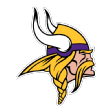
1. Ifeadi Odenigbo, EDGE, Minnesota Vikings
Age: 26 | Draft: Pick 220 in 2017 | Career snaps: 375
With the Vikings parting with Everson Griffen, it's a pretty clean projection to assume that Odenigbo will be moving into the starting lineup. But in case you need a reassuring word from Vikings defensive line coach/co-coordinator Andre Patterson, he told Vikings reporters in a conference call: "I'm excited about Ifeadi to continue to improve as a player. He made great strides last year, and he's a tremendously hard worker. I know he's busting his tail right now. ... As a matter of fact, I have to talk to him about not overtraining."
Odenigbo's roots at Northwestern were as a power player with NFL pass-rush moves and flashes, but he was essentially platooned by the Wildcats. He led the Big Ten in sacks as a senior anyway, with 10, and ran a 4.72-second 40-yard dash at the combine. His performance in our SackSEER projection system was 62.7%, impressive for a low-round pick; Odenigbo had an explosion index of 0.61 and offered a lot of college production.
Over the last five games of last season, Odenigbo notched four of his seven sacks, forced a fumble and returned another fumble for a 56-yard touchdown. He brought down both Russell Wilson and Aaron Rodgers last season. He might still platoon with a different defender on pure run downs if that section of his game gets off to a poor start, but Odenigbo is on pace to become yet another late-round win on the edge for a Vikings team that already starts 2015 third-rounder Danielle Hunter.
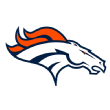
2. Dre'Mont Jones, DL, Denver Broncos
Age: 23 | Draft: Pick 71 in 2019 | Career snaps: 284
All Jones did down the stretch was win AFC Defensive Player of the Week with a 2.5-sack, two-tackles-for-loss demolition against the Lions in Week 16. That's about the gist of what happened when he played at Ohio State, where he picked up 8.5 sacks and 13 tackles for loss in a dominant junior year that helped him make the easy decision to turn pro.
The Broncos had some turnover inside this offseason, bringing in Jurrell Casey and losing Derek Wolfe and Adam Gotsis. Jones is ticketed for a bigger role this season in that front, though one that may still see him protected on some run-down snaps as the Broncos have a deep line of solid run-stuffers such as Mike Purcell and DeMarcus Walker. Jones gained the respect of head coach Vic Fangio by playing hurt down the stretch, and Fangio noted in a presser after that Week 16 win over the Lions that "a lot of guys wouldn't have played yesterday with what he had, but he wanted to play. I think that's a good indication of who he is as a guy, and he got rewarded with a couple of sacks. Those are the kind of guys you want on your team."
If Jones grows further into his role and learns to run-stuff as well as he can rush, he's on the path to being one of the better interior linemen in the game, and he couldn't pick a better player to learn from in that regard than Casey. If he never learns to do more than that, he'll probably be a pretty good situational pass-rusher, à la Nick Fairley or Sheldon Richardson.
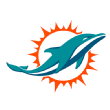
3. Preston Williams, WR, Miami Dolphins
Age: 23 | Draft: UFA in 2019 | Career snaps: 404
It had just turned November, the Dolphins were tanking for Tua (turns out they didn't need to), and Williams was somehow the best receiver on the roster. Williams, who went undrafted out of Colorado State mostly because of an arrest on a charge of domestic violence, led the Dolphins to an upset win over the Jets in which he caught five balls for 72 yards and two touchdowns. He also tore his ACL, maintaining his ability to remain under the snap count for this list.
After Williams left, DeVante Parker's production exploded. Parker had zero games with over 75 receiving yards in the first nine. After Williams left, Parker reached that total in five of the last seven, earning a huge contract extension. Between Parker's blowup and the hiring of new offensive coordinator Chan Gailey, Williams' ability to repeat his early-season play is a bit more in question than some players on this list. Still, the Dolphins didn't take a receiver in one of the deepest drafts at the position in some time, and Williams should recover from his injury in time for the 2020 season.
A tall, fast jump-ball winner, Williams caught just 53% of his targets last year -- but in an offense that did not truly hit its stride until after he left. Whether it's Ryan Fitzpatrick or Tagovailoa at quarterback, Williams is the best bet among the receivers on this list to hit in a volume role. That's why he's parked right here.

4. Jamel Dean, CB, Tampa Bay Buccaneers
Age: 24 | Draft: Pick 94 in 2019 | Career snaps: 370
In his first year with Tampa, Dean was one of those odd corners who came in with the nickel package but played outside. Sean Murphy-Bunting would move to the slot, freeing Dean to practice his aggressive press coverage on anyone he could get his hands on. Which, it turned out, was a lot of receivers ... after his first game. In Dean's first NFL action against Seattle in Week 9, he allowed 155 yards on targets in his coverage, including 81 alone on two DK Metcalf bombs.
The rest of the season, Dean was targeted 30 times and allowed 107 total yards. That includes holding his targets to 0 yards against Arizona, 38 in two games against Atlanta, and 28 against Houston. He also picked off Deshaun Watson and Kyler Murray.
Scouts liked Dean's size and speed coming out of Auburn but were concerned about his multiple high school and college knee surgeries. His 4.3 40-yard dash at the combine seemed to assuage a lot of those fears. The Bucs were a terrific landing spot for him precisely because of how much aggressive coverage Todd Bowles plays, but anyone who can play outside corner as well as Dean played for the last seven weeks of the season deserves to raise some alarm bells.

5. Chase Winovich, EDGE, New England Patriots
Age: 25 | Draft: Pick 77 in 2019 | Career snaps: 291
Winovich told Patriots.com during the 2020 offseason that he saw last season as "challenging," which is an interesting way to describe a year when he had 5.5 sacks off the bench in a part-time role. Winovich is a big winner in New England's tumultuous offseason that saw Jamie Collins, Elandon Roberts and Kyle Van Noy flee to former Patriots coaches in big-money deals. New England hit the pass-rush hard in the draft with Josh Uche in the second round and Anfernee Jennings in the third round, but Winovich is the only upside player the team has in the way of real experience.
Winovich was an effort rusher at Michigan, finishing with 18.5 sacks in his last three seasons and 43 tackles for loss. None of his combine results really stood out except for an impressive 6.94-second 3-cone drill. His SackSEER was low (36.7%) in part due to a lack of passes defensed in college.
The Patriots figure to break in the rookies slowly in a COVID-19 year as long as they have other options, and with the depth chart populated by the likes of John Simon and Shilique Calhoun, they don't really have any impactful pass-rushers with any experience outside of Winovich. He figures to be involved early and often.

6. Miles Boykin, WR, Baltimore Ravens
Age: 24 | Draft: Pick 93 in 2019 | Career snaps: 425
Boykin would have been compared physically to Calvin Johnson if he were about 2 inches taller. What happened instead is that Boykin went to the combine, ran a 4.42 40-yard dash at 220 pounds, then followed that up with 98th-percentile scores in the jumps while showcasing elite skill at just about everything besides the bench press. If the 2019 combine was a show, Boykin was one of the main attractions.
However, he's in a bit of an odd situation. Clearly the Ravens are likely to have him on the field a lot this year. Seth Roberts is gone to Carolina, and both Willie Snead IV and Devin Duvernay are better suited for the slot. So the path to playing time is clear. The college production shows Boykin as a touchdown machine, with 11 in 77 career college targets at Notre Dame. Our Playmaker Score wide receiver projection system (predicting 170 yards per season) was not too high given a projected fifth-round slot for Boykin, but the combine made his stock soar.
Lamar Jackson is a much more accurate quarterback when targeting the middle of the field right now, and Boykin is mostly going to be a perimeter operator in an offense that already has plenty of mouths to feed. That doesn't mean Boykin won't offer a lot of value: He caught 10 of 15 targets from Jackson on the outside last year for 166 yards. But Boykin could be a better overall player than Preston Williams in 2020, just without the same volume.

7. Bobby Okereke, LB, Indianapolis Colts
Age: 24 | Draft: Pick 89 in 2019 | Career snaps: 472
Will Okereke beat out Anthony Walker to be the No. 2 linebacker in Indy this year? It seems like a pretty easy transition on paper, but the Colts have offered a ton of praise for Walker's intelligence. Linebackers coach Dave Borgonzi certainly expects a breakout, telling Colts.com: "We expect Bobby to make a big jump from Year 1 to Year 2, just in his production, his plays on the ball, interceptions, game-changing plays. Bobby has a lot of ability and we expect him to really have a great season this coming year."
Coming out of Stanford, Okereke caught eyes at the combine with a 4.58 40-yard dash at 239 pounds. Being a good coverage linebacker means a lot in a league that needs as many of them as it can get, and Okereke showed some early aptitude in that area as he allowed just 71 yards on 12 coverage targets after Week 3's firestorm against the Falcons.
If Okereke can improve on run defense quickly heading into the year, he won't give the Colts any choice but to play him. Even if the Colts still do play Walker some, it's likely that Okereke will be the big factor on passing downs. If that pans out as they hope, an Okereke/Darius Leonard tandem could be tough to throw underneath on for many years.

8. Jace Sternberger, TE, Green Bay Packers
Age: 24 | Draft: Pick 75 in 2019 | Career snaps: 65
Buried on the bench last year almost inexplicably behind a washed-up Jimmy Graham, Sternberger should finally get some freedom now that the only player on the tight end depth chart with a meaningful role last year is Marcedes Lewis. Sternberger is a rarity: a skill position player who has Matt LaFleur's eye. LaFleur told the team's official website in March that "[Sternberger] has contact courage. He's not afraid to put his face on people. He's a much better blocker than anyone ever thought he was coming out of Texas A&M. I'm just excited for his future."
And while Sternberger showed plenty at Texas A&M with an 832-yard, 10-touchdown outburst in his only real season of work after transferring from Kansas, this placement for him is really more about the opportunity than anything else. The Packers had no reliable targets last year other than Davante Adams -- Aaron Jones finished second on the team in targets -- so it stands to reason that Sternberger could step right in and fill a gaping No. 2 target role the Packers never properly filled after Jordy Nelson was released.
Sternberger's rookie season did not offer much of a clue about how he would play going forward, as he was mostly used as an extra blocker in three-tight-end sets, but the pedigree and opportunity combine to tell a story worth being quite optimistic about.

9. Alexander Mattison, RB, Minnesota Vikings
Age: 22 | Draft: Pick 102 in 2019 | Career snaps: 197
Simply put: With Dalvin Cook holding out and on the verge of free agency, there are very few players with a better potential future situation than Mattison. Gary Kubiak's running backs have been putting up 1,000-yard seasons whether they are good or not since before Football Outsiders even existed. The Vikings picked Mattison in the third round despite a number of pundits not having that high of a grade on him, which suggests they hold him in quite high esteem.
Mattison, like Cook, had a pretty mediocre combine that ended with a faceplant on the 40-yard dash, with a time of just 4.67 seconds at 221 pounds. That's linebacker speed at defensive back size. But Mattison showed just about everything else you could want from a runner: physicality, quickness, vision and intelligence. It all led to massive production at Boise State, as Mattison even saw the field for all 13 games as a freshman.
In his first season in Minnesota, Mattison finished with a respectable 24 DYAR in 100 totes, despite a relatively low success rate of 38%. Mattison averaged 4.6 yards per attempt, with no real negative split when running zone plays, but SIS charting charged the Vikings with 11 blown blocks during those 100 attempts, and those 11 carries averaged minus-1.2 yards. With enough skill to be a competent receiver as well, the Vikings have the ultimate leverage against a Cook holdout: someone who can do the job just as well without a high price tag.

10. Daniel Brunskill, OL, San Francisco 49ers
Age: 26 | Draft: UFA in 2017 | Career snaps: 476
Mike Person was the 49ers' starting right guard last year, but it was Brunskill who showed time and again that he belonged on the field. Working at both tackle and guard, Brunskill blew just two blocks that led to sacks -- one against Aaron Donald -- and showcased some pass-blocking steadiness on a team that needed a lot of it over the course of the season due to various injuries.
Brunskill's time at San Diego State showed a player with enough athleticism to fit a zone scheme: He's a converted tight end who earned a second-team All-Mountain West selection after switching positions right before his senior year, though he did play offensive line in high school. The knock on him coming out was a lack of functional strength, which is why he went undrafted. After two years in Atlanta -- originally under Kyle Shanahan -- Brunskill signed with the 49ers last offseason and picked up seven starts.
Person retired this offseason, but the 49ers didn't draft a lineman until the fifth round, and only Ben Garland remains as an interior challenger who played last year. That should put Brunskill in position to become a starter for the first time, and what we saw last year indicates he can handle that well.

11. Hunter Renfrow, WR, Las Vegas Raiders
Age: 25 | Draft: Pick 149 in 2019 | Career snaps: 435
He's the 11th-best prospect because he's on the field in only 11 personnel. See what we did there? Renfrow had always played above his tools at Clemson, and he did so again in his first season with the Raiders when he put up a 7.9% DVOA on the back of a 69% catch rate as a super slot receiver.
Renfrow's combine was the disaster that it was expected to be: He ran a 4.59 40-yard dash, he weighed in at just 184 pounds, and his hand size, wingspan and arm length were all in the bottom 5 percentile of all NFL wideouts since 2000. It didn't really matter, because Renfrow is the rare player who appears to live the Wes Welker lifestyle as well as Welker did. He uses the shifty, quick change of direction to get open underneath, and he knows exactly where to run to when he catches the ball.
The upside of a player like this is a weird topic to discuss. There's no physical upside, but Renfrow is the kind of player who can thrive as a big part of a short-passing offense as long as he stays healthy. That's exactly what the Raiders did with him last year, and as long as they're trailing often enough to keep Jon Gruden from using multiple tight ends, they should do the same thing this season.

12. Julian Love, DB, New York Giants
Age: 22 | Draft: Pick 108 in 2019 | Career snaps: 409
One of the youngest players on the list, Love was an easy middle-of-the-field pick for the Giants in the middle rounds of the draft, and one of the few players who showed that Dave Gettleman recognizes that the passing game exists. Love essentially didn't break the lineup until Week 12 but played almost all the Giants' snaps from Week 13 to the end of the season. Over that span, we have Love credited with 21 targets into his coverage, on which he allowed just 72 yards and one touchdown. He moved from cornerback to strong safety to replace the injured Jabrill Peppers.
Coming out of Notre Dame in 2019, Love was regarded as a very safe fit as an NFL slot corner with great coverage instincts. The combine caused his draft stock some damage because he ran a 4.55 40-yard dash, just under the 4.6 mark that draftniks generally consider too slow for a corner. That was the main grievance that took him out of the top two rounds, even though he broke up 39 passes in his final two seasons for the Irish.
With the selection of Xavier McKinney in the second round, the Giants have the makings of a good nickel or dime set with Love, McKinney and Peppers. We don't know whether Love will be labeled a safety or corner, but he's going to play in the middle of the field and he's going to cause havoc.
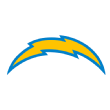
13. Drue Tranquill, LB, Los Angeles Chargers
Age: 25 | Draft: Pick 130 in 2019 | Career snaps: 380
What Tranquill offered was well spelled out in college: He's a modern coverage linebacker who doubles as an excellent special-teamer. He finished his career at Notre Dame with three picks and 11 passes defensed, as well as 184 solo tackles. Placed into this role at the NFL level, Tranquill did fairly well in coverage and excelled at special teams. He was named to the PFWA All-Rookie Team as the non-returner/kicker special teams player and finished second on the Chargers in special teams tackles behind Derek Watt.
Where his stock really climbed was (surprise) at the combine, where he ran a 4.57 40-yard dash at 234 pounds, showed good leaping ability and had a sub-7s 3-cone drill while completing the bench press 31 times. Tranquill gave up two passes all season that went more than 15 yards: a 47-yard go route to Tyreek Hill in Week 17 and a screen to Jonnu Smith for 35 yards in Week 7. He also added some pretty solid run defense, albeit in a small sample of plays that mostly saw him in on passing downs.
The Chargers added a lot at linebacker this season between first-round pick Kenneth Murray and ex-Bengal Nick Vigil. They also have to decide just how invested they are in Denzel Perryman after three straight years below 400 snaps. At worst, Tranquill will continue to be an ace special-teamer and passing-downs linebacker. At best, he can take the leap and become a three-down player next to Murray.

14. Justin Jackson, RB, Los Angeles Chargers
Age: 25 | Draft: Pick 251 in 2018 | Career snaps: 242
Jackson lost a large chunk of last season to a calf injury and missed his opportunity to really solidify a role in the Chargers' backfield for this season. When he played, he was wildly effective, finishing with the highest DVOA of any back with more than 20 rushes at 34.9%. In 2018, he recorded a 29.9% receiving DVOA. So the full package has been on display for the past two years, but after Jackson played in just 20 of 32 possible games, the Chargers had to spend a draft pick on Josh Kelley to make sure they were set post-Melvin Gordon.
However, with Kelley not getting in any work in front of Anthony Lynn, it's a little harder to believe offensive coordinator Shane Steichen's May proclamation that all three backs would share the load. We believe Jackson will get the first opportunity to be the inside thunder to Austin Ekeler's lightning, and Jackson has shown that he has the talent to seize the role if he plays well off the bat.
Power running and tackle breaking were considered weaknesses of Jackson's game in college, but we now have him down for 27 broken tackles in 103 touches, which is a ridiculous rate. We have seen other people lose faith in him, but every time he has been on the field, he has made explosive offense happen, and it's hard to ignore it.

15. Ja'Whaun Bentley, LB, New England Patriots
Age: 24 | Draft: Pick 143 in 2018 | Career snaps: 413
We believed that Bentley would get on the field last year and make his presence felt after he lost his rookie season to a biceps tear, but instead the Patriots were able to swoop up Jamie Collins in free agency and used him and Kyle Van Noy extensively up the middle with Dont'a Hightower. Bentley instead spent the season mostly as a reserve, playing over 40% of snaps in just three games.
Bentley now finds an almost barren depth chart in front of him, with Collins in Detroit and Van Noy and another Patriots backup linebacker, Elandon Roberts, in Miami. Hightower and Bentley are the only middle linebackers from last year's team that played regular-season snaps. The only player New England added in the draft at the position is sixth-rounder Cassh Maluia.
We still like Bentley a lot as a run-stuffer. It's a very small sample size, but he allowed just 49 yards on 12 targets in pass coverage in every game besides New England's Week 4 game against the Bills. There's little reason to believe he won't be a three-down linebacker this year as long as he proves he can handle passing-down duties. That's a long-term concern, but there's not much in place to challenge him right away in 2020.

16. David Long, CB, Los Angeles Rams
Age: 22 | Draft: Pick 79 in 2019 | Career snaps: 109
This is mostly a pick about pedigree, because Long didn't log many snaps last year for a Rams team that primarily used Jalen Ramsey (Marcus Peters before the trade), Troy Hill and Nickell Robey-Coleman at cornerback. Robey-Coleman departed for free agency, leaving only Darious Williams as a real challenger for Long as the third corner.
At Michigan, Long was a true outside corner who bullied receivers without much in the way of repercussions and piled up impressive coverage numbers like a few other Wolverines in the past couple of draft classes. He plays stronger than his 5-11½, 196-pound frame would lead you to believe, which means he can handle some of the tougher matchups outside that the NFL can sometimes present. His horizontal movement is top-notch, which he demonstrated with an absurd 6.45-second 3-cone drill time at the combine.
Long's only real taste of major NFL action was in Week 17's finale against the Cardinals, when he played 76% of the snaps. We have him allowing three catches for 42 yards and a touchdown on five targets -- not bad, but not great either. We believe Williams will probably get the first look at snaps, but there's not much track record of NFL success there, and Long's pedigree will probably get him on the field in some way this year between Williams' past, Hill playing on a one-year deal, and Ramsey's contract status being hung up in long negotiations. Long is the best long-term bet of the group, and we expect him to start making that clear this year.

17. Jalen Hurd, WR, San Francisco 49ers
Age: 24 | Draft: Pick 67 in 2019 | Career snaps: 0
What makes Hurd such a fascinating player is that he has the classic X receiver body, but he also spent a large majority of his college career as a running back -- a running back who started ahead of Alvin Kamara. He spent three years at Tennessee, then transferred to Baylor, where, after a year learning the position, he went off for 946 yards on 69 catches as a senior.
So obviously, you've got a lot of after-the-catch ability here. If Hurd had a bonkers pro day (he didn't work out at the combine), he probably had top-two-rounds ability, but he ran only a 4.66 40-yard dash coming off offseason knee surgery. Hurd then went and caught two touchdowns in the 49ers' first preseason game before a stress fracture in his back later in the preseason cost him his rookie year.
Anybody who cuts like this and who plays in a Kyle Shanahan offense should be on your radar, and that was before Deebo Samuel's Jones fracture put his early-season availability in doubt. Jimmy Garoppolo told reporters in June: "When you have a guy like that, it makes quarterbacking very easy." Hurd is the obvious draft value choice to get extended snaps and, if he's used anything like the way the Titans used A.J. Brown last year, he could be an instant hit in fantasy leagues.
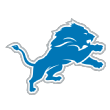
18. Amani Oruwariye, CB, Detroit Lions
Age: 24 | Draft: Pick 146 in 2019 | Career snaps: 215
Oruwariye's rookie season mostly came down to the fairly meaningless games the Lions had right around Thanksgiving, as he played 76% of the snaps in Week 12 against Washington and 91% against the Bears. As you would expect from a rookie as physically gifted as Oruwariye who didn't get picked in the first round, the season became a bit of a learning experience. He mixed good games (one pick, 21 yards in five targets against Washington) with mediocre ones (36 yards allowed on three completed targets against the Bears). He did end the season on a high note by picking Aaron Rodgers in the Week 17 upset bid that almost knocked Green Bay out of the No. 2 seed.
Oruwariye has true outside size at 6-2, 205 pounds and showed proficient speed with a 4.47 40-yard dash at the combine. Oruwariye's combine performance was not by any means noteworthy or dominant, but corners that size are valued as long as they have proficient athleticism and can jam, which Oruwariye demonstrated he could at Penn State.
With Jeff Okudah, Justin Coleman and Desmond Trufant signed up for next year, Oruwariye again will start the season as the fourth cornerback. But rookie cornerbacks are not always a group that starts well, and Trufant allowed roughly 10 yards per pass attempt last year and has not been the same player since his 2016 pectoral tear. Oruwariye is going to surface here eventually, the only question is when.

19. Chandon Sullivan, CB, Green Bay Packers
Age: 24 | Draft: UFA in 2018 | Career snaps: 437
The Packers never trusted Sullivan with a true starting role outside, but he got playing time in their deeper packages both in the box and at slot cornerback. Sullivan was absolutely lights out in coverage in this role that mostly saw him on slot receivers, running backs and tight ends. He allowed five first downs in coverage all season and no touchdowns. He also allowed a grand total of six completions in his 21 coverage snaps.
Sullivan's draft stock was heavily impacted by his combine. He ran a 4.60 40-yard dash that essentially ended any hopes he had of being an outside corner. However, he displayed other athleticism there by placing in the 90th percentile of both the broad and vertical jumps among corners since 2000. Sullivan signed with the Eagles after the draft and made it to their practice squad in 2018. The Packers signed him away after the 2019 season and plugged him into this role, and it worked.
With Tramon Williams leaving as a free agent, the path of least resistance for the Packers is probably using Sullivan as the primary nickel corner, which is a role that wouldn't seem a stretch from what he did last year. No new corners were drafted, and 2018 second-rounder Josh Jackson has been a pretty big disappointment in his first two years in the NFL. If Jackson does get corner snaps, of course, Sullivan gets to stay in a familiar role that he excelled at in 2019.

20. Will Dissly, TE, Seattle Seahawks
Age: 24 | Draft: Pick 120 in 2018 | Career snaps: 376
Let's lead with the bad: Dissly has finished the season on IR in each of his two years. A torn Achilles ended his 2019 season, and a torn patellar tendon ended his 2018 season. He has played in just 10 of the 32 possible games he could have played in since the Seahawks drafted him.
But when he plays ... Dissly caught 23 of 27 targets last year for 262 yards and four scores, finishing second among qualifying players in tight end DVOA at 36.0%. In 2018, he finished with a 30.6% DVOA on 14 pass attempts. He has showcased a natural chemistry with Russell Wilson on the play-action pass and has more evasion than you'd expect in the open field and up the seam for a player who runs as stiff as he does with the ball.
The Seahawks signed Greg Olsen this offseason to provide some more punch in passing sets, and that may relegate Dissly to more of a complementary role again. But Olsen is no long-term solution at 35, and all Dissly has done is produce when given the opportunity. Health is a skill, which is why Dissly is as low as he is, but he stands a good chance to outproduce the other tight ends on this list if he can remain healthy.

21. Darius Phillips, CB, Cincinnati Bengals
Age: 25 | Draft: Pick 170 in 2018 | Career snaps: 341
After a phenomenal preseason, Phillips blitzed his way onto the Cincinnati 53-man roster last year for the second straight season, on a crowded depth chart that included B.W. Webb, William Jackson III, Darqueze Dennard, Dre Kirkpatrick and Tony McRae. All Phillips did with his 101 snaps was intercept four balls while allowing just four completions in 12 attempts.
A small-schooler out of Western Michigan, Phillips caught scouts' eyes by putting on a show against the big boys. He returned a kickoff 100 yards against USC and picked off balls against USC and Michigan State. Phillips was not a big corner at 5-10, 193 pounds, so scouts assumed he would have to play inside and create value on special teams, but he drew enough interest to get a combine invite, and the Bengals popped him in the fifth round.
While the Bengals reloaded on corners in free agency, the end result was pretty favorable for Phillips. Trae Waynes and Jackson are likely locks to play, with Mackensie Alexander as the presumptive third corner ahead of Phillips. Jackson was the only one of the corners ahead of Phillips in the pecking order to return, and defensive coordinator Lou Anarumo seemed enamored with Phillips' finish to last season, praising his ball skills at the combine. There might be more here than meets the eye.

22. Foster Moreau, TE, Las Vegas Raiders
Age: 23 | Draft: Pick 137 in 2019 | Career snaps: 371
Another player who probably would have avoided this list if not for a knee injury, Moreau was instantly a high-use tight end in an offense that loves tight ends, and he produced early. Moreau was targeted 27 times last season and had a 29.6% DVOA that ranked third highest in the NFL among tight ends.
Moreau managed 629 receiving yards and six touchdowns in LSU's offense circa Not Joe Brady but showed off a broad skill set at the NFL combine, running a 4.66 40-yard dash at 253 pounds, along with an elite 4.11-second 20-yard shuttle time. Moreau was more of a possession receiver at LSU, and that continued in the pros, as he did not catch a single pass that traveled more than 15 yards. However, only one of his catches came out of a one-tight-end set, whereas eight of them came out of three-tight-end sets.
With the signing of Jason Witten, Moreau's role for this year is a bit more up in the air than it probably should be. Jon Gruden loves tight ends, but among Moreau, Witten and Darren Waller, he has a lot of potential pass targets. At the very worst, though, this season can be sold as Moreau learning from an all-time great, and he should be a solid tight end going forward.

23. Steven Sims Jr., WR, Washington
Age: 23 | Draft: UFA in 2019 | Career snaps: 310
Sims is one of those football stories that might not happen at all in 2020 as we deal with shortened preseason and training camps. Sims was not invited to the combine and didn't show up on many, if any, pre-draft lists we could find. Mel Kiper's wideout list for the 2019 draft went 106 players deep, and he didn't mention Sims. It's not a total surprise given Sims' 40-yard-dash time at his pro day of 4.5 seconds at 5-10, 176 pounds.
Sims was Kansas' best receiver for the entirety of his career, garnering 30 receptions as a freshman and leaping to a team-high 72 as a sophomore, but his senior season was a mess. Washington thought it was getting a return specialist -- and Sims can do that too -- after signing him. What the team didn't know was that it had gotten someone as versatile and agile in the open field as Sims turned out to be. It's how he ascended the depth chart one peg at a time, until suddenly he was drawing massive target shares in the final three weeks of the season. In those last three weeks, Sims was targeted 31 times and caught four touchdowns.
In a conference call with reporters this offseason, Washington OC Scott Turner named Sims as one of the three players he wants to creatively get the ball to. Antonio Gibson is a bit of a threat, and while Sims had good results on balls thrown deeper, he had an extremely low average depth of target of 4.6 yards. So there's a little bit of a squeeze here, but Sims has already bloomed under pressure several times throughout his career. Sims is what Tavon Austin might have been like if Austin actually could play receiver.
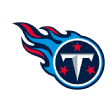
24. Amani Hooker, S, Tennessee Titans
Age: 21 | Draft: Pick 116 in 2019 | Career snaps: 332
Another secondary prospect without a set position, Hooker was dominant at Iowa throughout his final two seasons of eligibility, where he broke up nine passes, picked off six and played a brand of press coverage you don't often see in college. He was a force in the slot when asked to come erase players at the line of scrimmage. He tested well at the combine, putting up 70th percentile or better scores in almost all the agility, jump and speed drills.
The Titans didn't have much of a plan for him to start in Year 1, but he got consistent playing time in big nickel and dime packages as the deep safety. The only game where Hooker was targeted more than twice per our numbers was in Week 13 against the Colts, when he allowed just one catch for 12 yards on four targets. His major bugaboo in the playoffs was just covering Tyreek Hill, which, as you can see from this list and Hill's stat line last year, is something most players have problems with.
For Year 2, the Titans have let Logan Ryan walk and will be counting on rookie Kristian Fulton as their third corner behind Adoree' Jackson and Malcolm Butler. They also have retained Kenny Vaccaro as a starting safety, which comes with its own health concerns, because last year was the first time since 2015 that Vaccaro didn't miss a game. The bet here is that Hooker is going to get on the field in some form next season and show enough of what he showed at Iowa that the coaching staff won't be able to relegate him to the bench.

25. Connor McGovern, OL, Dallas Cowboys
Age: 23 | Draft: Pick 90 in 2019 | Career snaps: 0
Not to be confused with the other Connor McGovern, an offensive lineman drafted by the Broncos in 2016 -- yes, we somehow have multiple Connor McGoverns in the league -- this McGovern was the latest out of the Penn State offensive line factory. While the Cowboys' McGovern did not play any games last year after an offseason pectoral injury, he's likely to be involved in any sort of Dallas offensive line play going forward following Travis Frederick's retirement.
McGovern is one of those players who seemed to be high on every pre-draft list we could find. He did extremely well at the NFL combine, doing 28 reps in the bench press, running the 20-yard shuttle in 4.57 seconds and showing off a broad jump of 112 inches that implied a lot of explosiveness. McGovern played nine of 13 games at right guard as a freshman at Penn State, moved to center as a sophomore and then back to right guard as a junior. He's a good fit for the gap schemes that Dallas likes to run with Ezekiel Elliott. The knock on him was in pass protection.
Dallas has talked up a couple of different versions of the future in the interior of its line. Joe Looney took a few snaps at center, and Dallas has also talked about potentially moving Connor Williams there. The Cowboys also drafted Wisconsin's Tyler Biadasz in the fourth round. But given how Looney hasn't been deeply impressive in most of his stints, the path of least resistance probably has McGovern starting at either guard or center while Biadasz gets acquainted to the NFL.
Honorable mention
Blessuan Austin, CB, New York Jets
Hakeem Butler, WR, Arizona Cardinals
Blake Cashman, LB, New York Jets
Justin Layne, CB, Pittsburgh Steelers
Harrison Phillips, IDL, Buffalo Bills
Tony Pollard, RB, Dallas Cowboys
Ben Powers, OL, Baltimore Ravens
Tim Settle, IDL, Washington
Jarrett Stidham, QB, New England Patriots
Josh Sweat, ER, Philadelphia Eagles
Methodology
This is the 14th anniversary of the list. We're still relying on the same things we always do: scouting, statistics, measurables, context, ceiling, expected role and what we hear from other sources. The goal is to bring your attention to players who are still developing in their second and third seasons, even after the draftniks have forgotten them. It's important to note that this list is not strictly about fantasy football (otherwise, there wouldn't be offensive linemen on it), and it's about career potential, not just the 2020 season.
Here's our full criteria:
- Drafted in the third round or later, or signed as an undrafted free agent.
- Entered the NFL between 2017 and 2019.
- Fewer than 500 career offensive or defensive snaps (except running backs, who are allowed just 300 offensive snaps).
- Have not signed a contract extension (players who have bounced around the league looking for the right spot, however, still qualify for the list).
- Age 26 or younger in 2020.
You'll see a number of references to Football Outsiders stats on our list, in particular DVOA (defense-adjusted value over average), which takes every play and compares its success to the NFL average based on situation and opponent. You can read more about DVOA and other FO stats on this page. Many of the other stats, including quarterback hurries and blown blocks, come from Sports Info Solutions and can be found in our new book, Football Outsiders Almanac 2020.






















 Reply With Quote
Reply With Quote